If you are short on time and looking to get more results out of your workouts, then resistance band training is for you! With resistance band workouts you can target exactly the areas you want in order to improve your strength, posture and muscle endurance for horse riding. The added resistance will add an extra level of difficulty and make you feel the burn, but also boost your results!
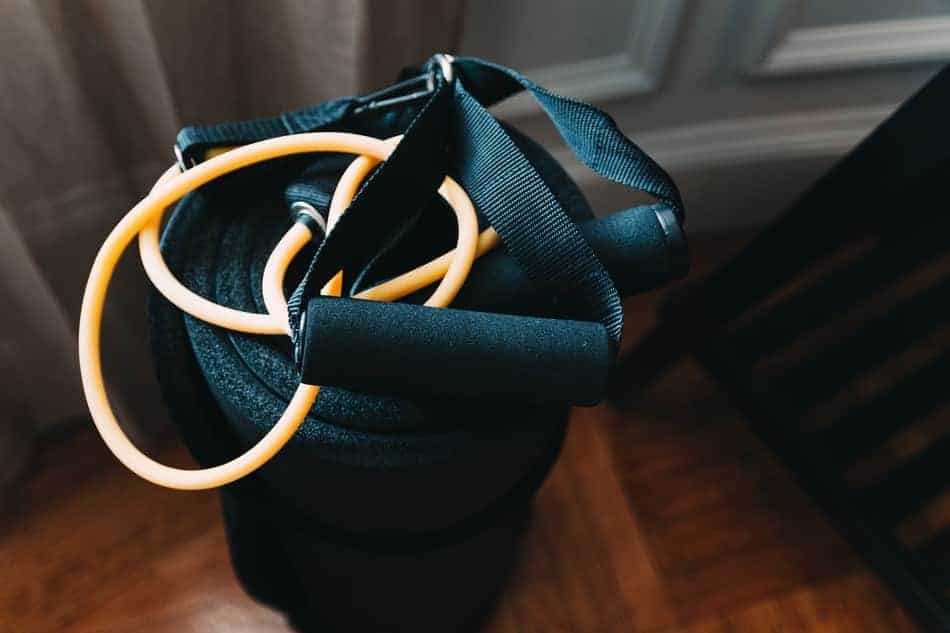
Psst! We also have resistance band workouts for CORE and UPPER BODY.
Why Lower Body Strength is Important for Horse Riding
When horseback riding, the lower body is continuously engaged. The legs (and core) is what keeps us in the saddle and what we use to move the horse forward. However, one of the most common causes of injury in riders is muscular imbalance – we are often stronger on one side than another, which makes our positioning and movements on the horse unbalanced too. Therefore, muscular stabilization is a crucial foundation in any equestrian fitness routine. This means focusing on the muscles that stabilize you when you exercise, which include the core and muscles that support correct posture in each exercise.
What Lower Body Muscles Does Horse Riding Work?
You are probably not here to hear all about the benefits fitness will bring to your horse riding routine so we will refrain from preaching to the choir. But let’s talk quickly about the most important muscle groups we need for horse riding to understand how building strength in these areas can help us improve our performance in the saddle.
Hip Adductors
The hip adductors are located on the inside of the thighs and are what helps us grip the saddle. These muscles will naturally develop in a horse rider over time and sometimes the challenge can actually be to relax enough in this area to achieve a deeper and more correct seat.
Hip Abductors
The hip abductors are located on the outside of the hip and upper thigh and support the rotation of the leg at the hip level (such as swinging your leg over the horse as you mount). These muscles ensure stability of the hips and pelvis, which helps us achieve a well-positioned leg in the saddle. Very often, these muscles are underdeveloped or unevenly trained in horse riders.
Hip Extensors
The hip extensors cover a large area at the back of the legs and includes the glutes and hamstrings. This area is what creates the force that moves the horse forward. Additionally, strong glutes contribute to protecting the lower back from strain and injury by acting as a buffer between this area and (tight) hamstrings.
Alright, enough with the educational content. Let’s get moving!
What You Need to Follow the Horse Learner Resistance Band Workout
- Resistance bands. We use loop bands for this article, but you can use any type of resistance band you have.
- Yoga mat. Any yoga mat you have available will do. You can also use a rug or towel if you don’t have a mat.
TIP: If you are just getting started with resistance band training we recommend starting with the ‘easy’ or ‘light’ bands and later increase the difficulty once you have built up a solid foundation and stabilizer muscles.
Horse Learner Lower Body Resistance Band Workout
We know equestrians are busy people, so this is a program you can get through in about 20 minutes. Repeat the exercises below three times and don’t forget to warm up before and stretch after.
Exercise #1 – Lateral Walk with Squats
Targets: Hip extensors and abductors
Repetitions: 10 on each side
Place the resistance band around your ankles.
Take a big step to the right (enough for you to stretch the band) and then sit back into a squat. Make sure to keep your back straight and your core engaged, place the weight in your heels and make sure your knees and upper body do not tip forward (you should be able to see your toes throughout the movement).
Push back up through your heels and squeeze your glutes as you come back up. Step left and then straight into another squat.
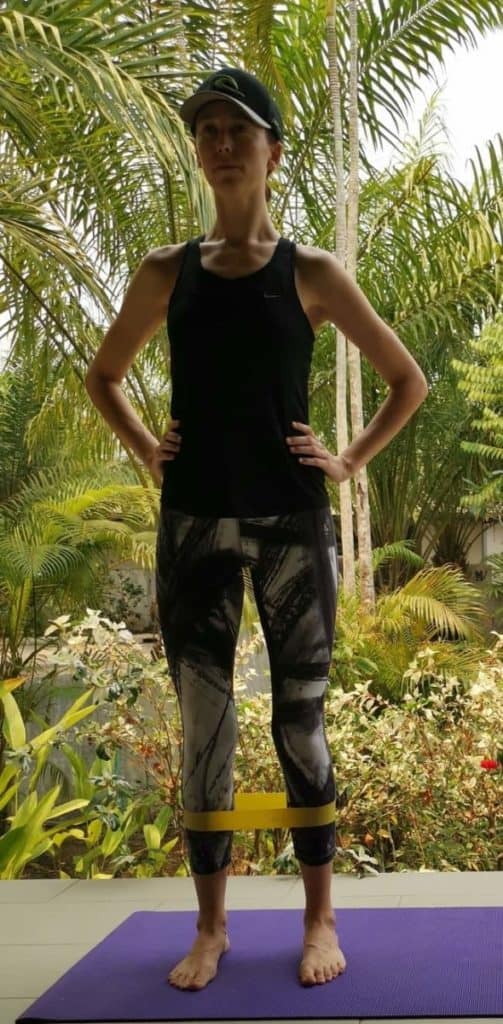
Starting position 
Step Out 
Squat
Exercise #2 – Standing Donkey Kicks
Targets: Hip extensors
Repetitions: 10 on each side
Place the resistance band around the calves and stand with your legs hip-width apart.
Kick your right leg back with a slight bend in the knee and slowly bring it back to the starting position. Stabilize your hips and torso during the movement by tightening your core and maintaining a neutral spine. If you struggle with balance, use a wall or a chair for support, however, this will make the exercise a little less challenging. Finish all the repetitions on one leg before switching to the other.

Starting position 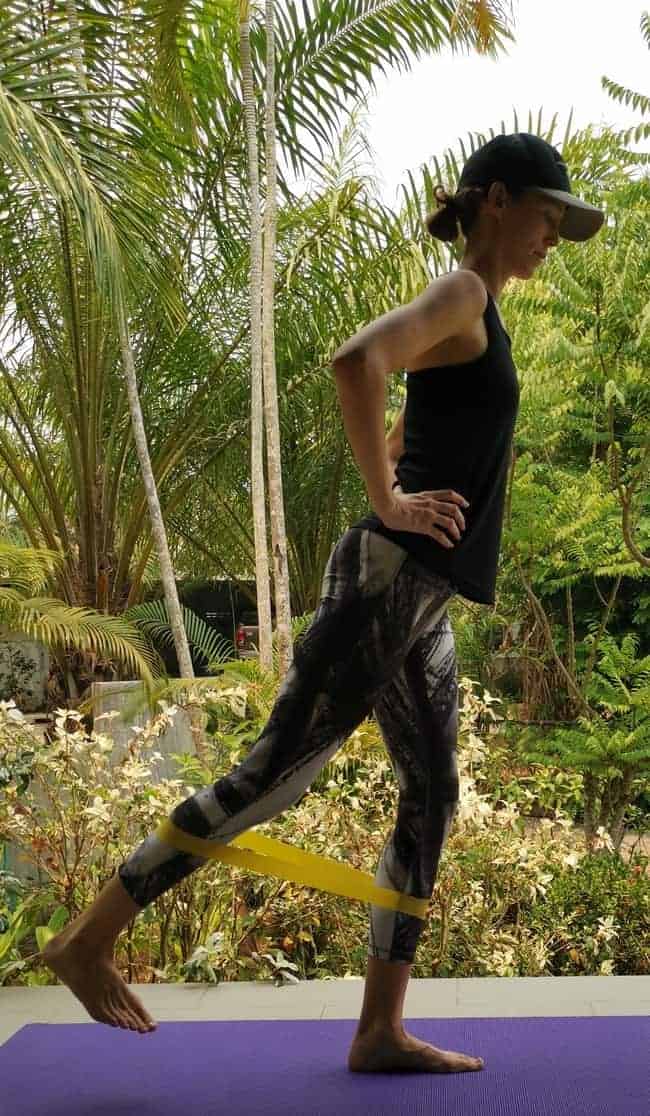
Slight bend in the knee 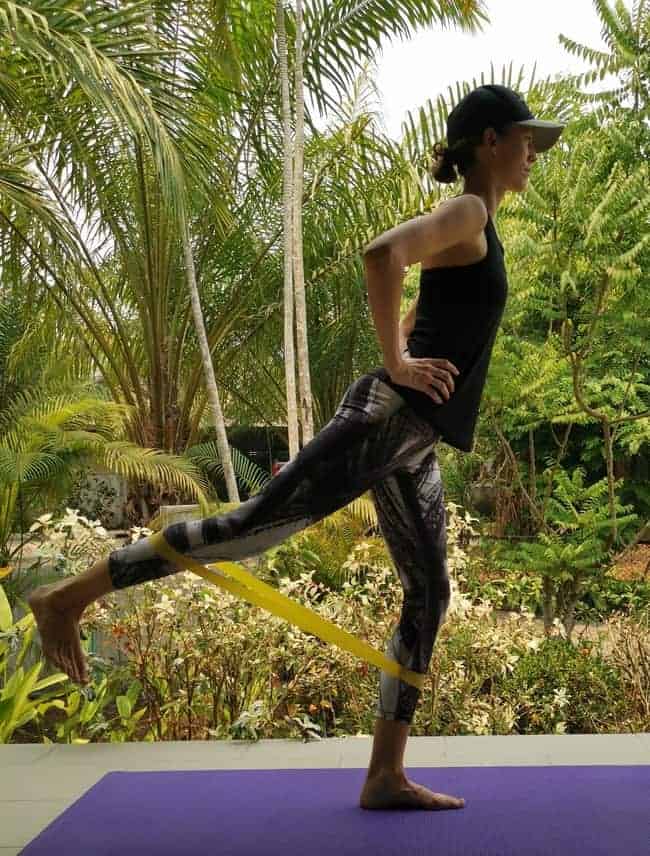
Kick back
Exercise #3 – Standing Hip Adduction
Targets: Hip adductors
Repetitions: 8 on each side
Attach the resistance band in a loop to a pole or a heavy piece of furniture. Place the loop around your ankle on the near leg.
Take one step away from the anchor point to create some tension in the band and stand on your far leg with a slight bend in the knee. Swing the near leg in front of the far leg as far across as you can without moving your hips. In a controlled and slow motion, bring the far leg back to the starting position. Stabilize your hips and engage your core throughout the movement.

Starting position 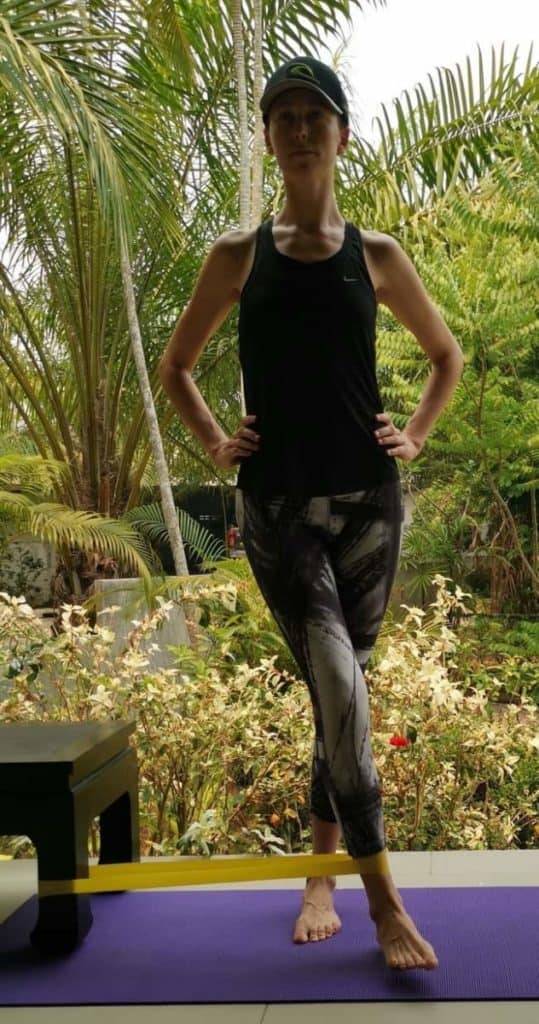
Swing near leg in front
Exercise #4 – Squat Jacks
Targets: Hip extensors and abductors
Repetitions: 16
Place the resistance band around your calves.
Place your feet hip-width apart and come down to a half-squat (45-degree angle), which is the starting position. Jump your feet out to the side and back in while maintaining your torso completely still and your back straight. You can keep your arms in front of you and bent at the elbow or for more of a challenge place them behind your head.
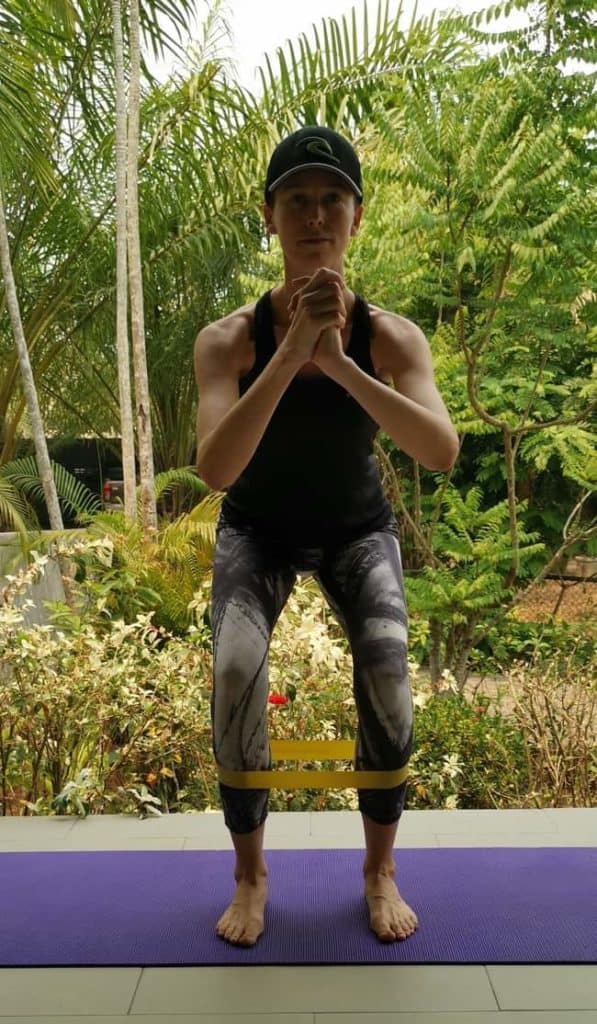
Starting position 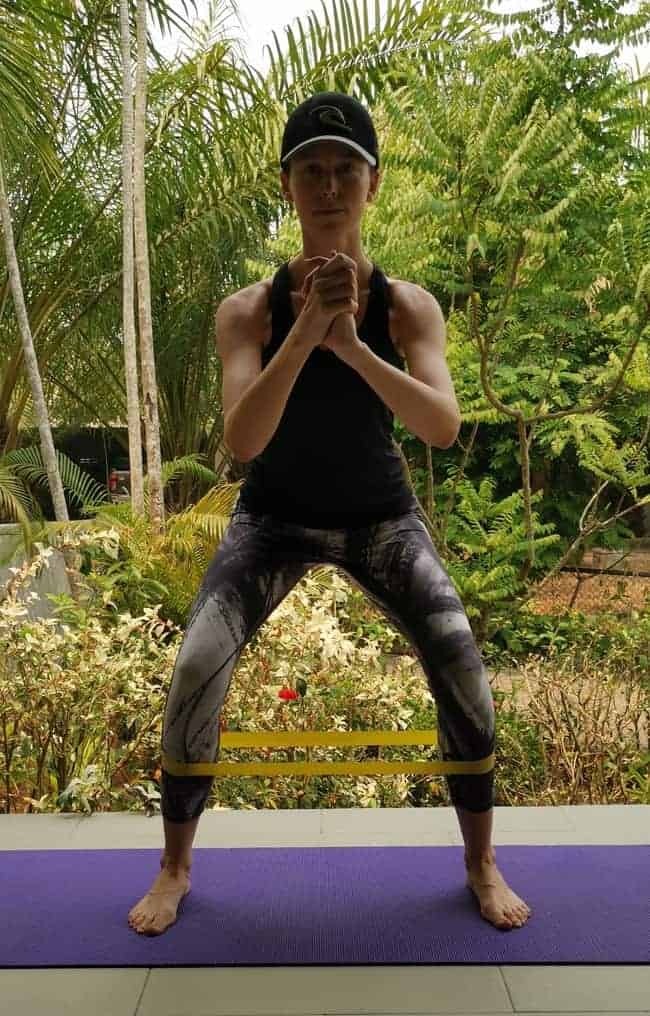
Keep the upper body still as you jump out
Exercise #5 – The Fire Hydrant
Targets: Hip abductors
Repetitions: 8 on each side
Come down on all fours in a tabletop position on the yoga mat and place the band around your thighs just above the knees.
Lift one leg up to the side (kind of the way dogs do when they pee) while maintaining a 90-degree angle in your knee. It is very important to stabilize your hips so they are parallel to the floor and tighten your core during the entire exercise. Your leg should be the only thing moving. Complete the repetitions on one side before changing.
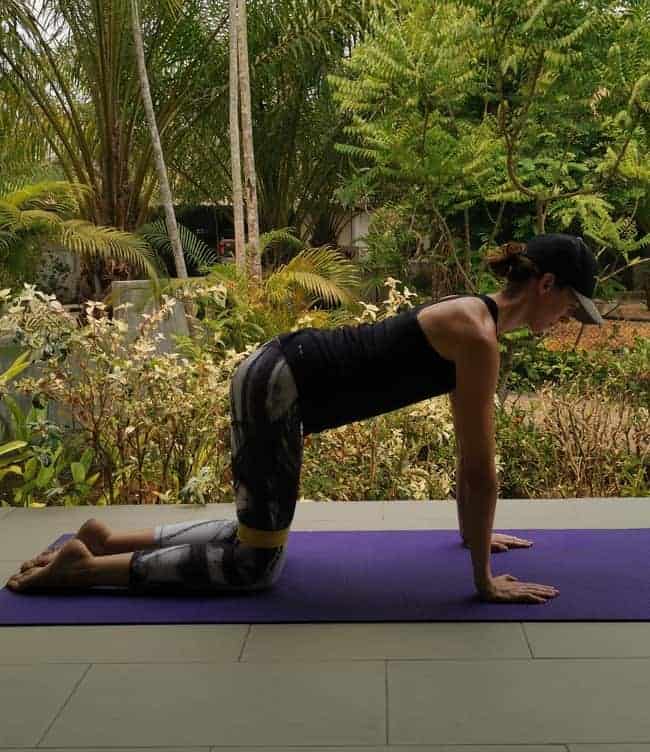
Starting position 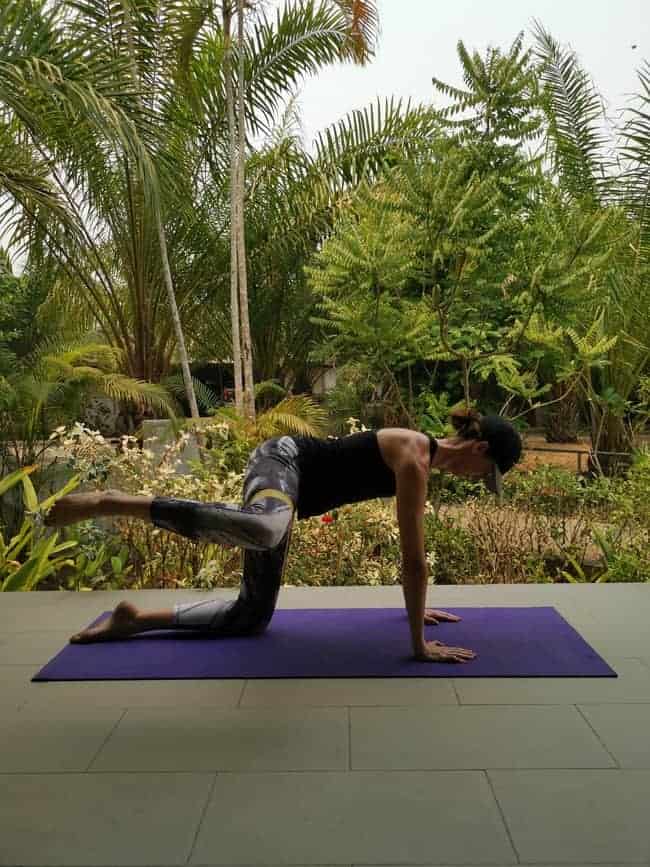
Keep hips square and core tight
Exercise #6 – Glute Bridge with Knee Openings
Targets: Hip extensors and abductors
Repetitions: 12
Lie down on your back with your knees in an angle and the soles of your feet on the mat. Place the band around your thighs just above the knees.
Tuck your tailbone in and lift your hips as high as you can by pushing through your heels and squeezing your glutes. Keep the hips lifted and push your knees out and bring them back in before lowering the hips back down. When coming down, roll from the top of your back, one vertebra at a time. Pull your belly button in throughout the exercise to engage your core and protect your lower back. For more of a challenge, stop your hips just before hitting the mat and push back up so there is no rest between repetitions.
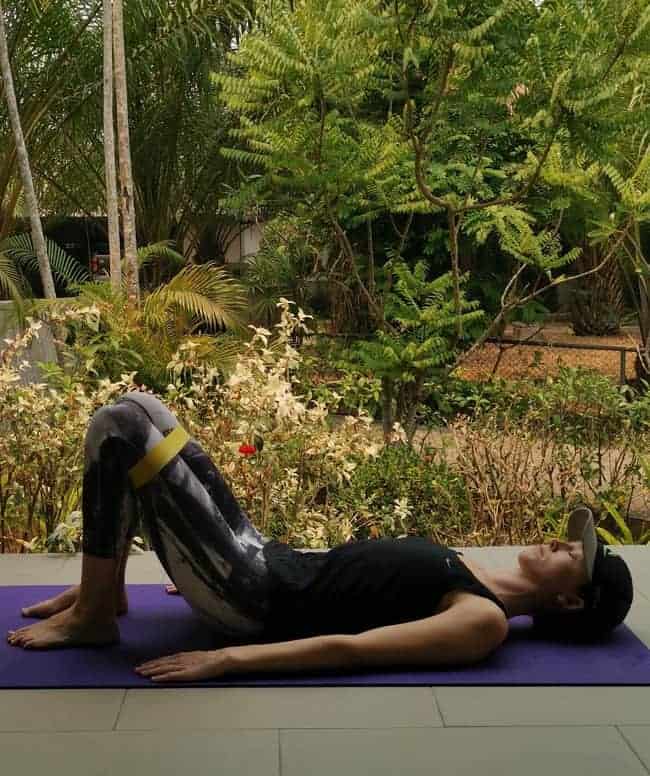
Starting position 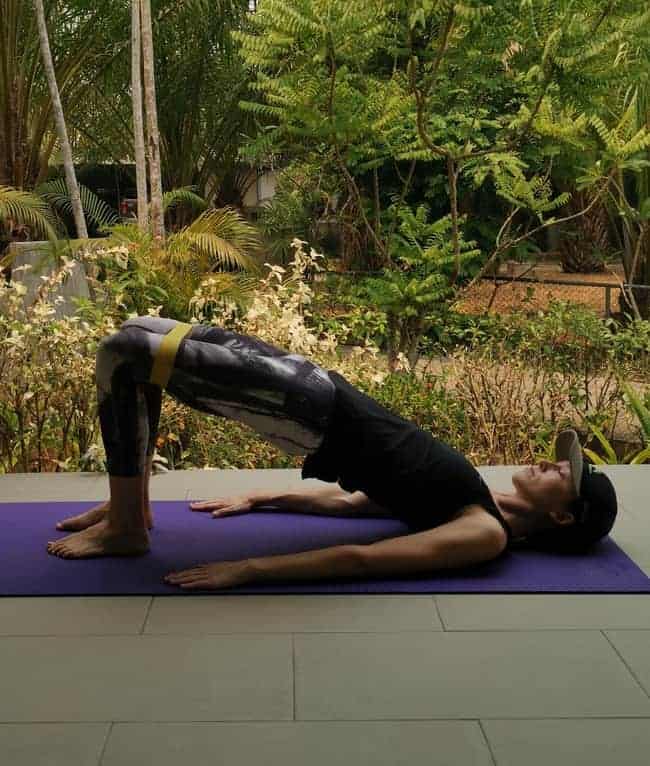
Lift the hips 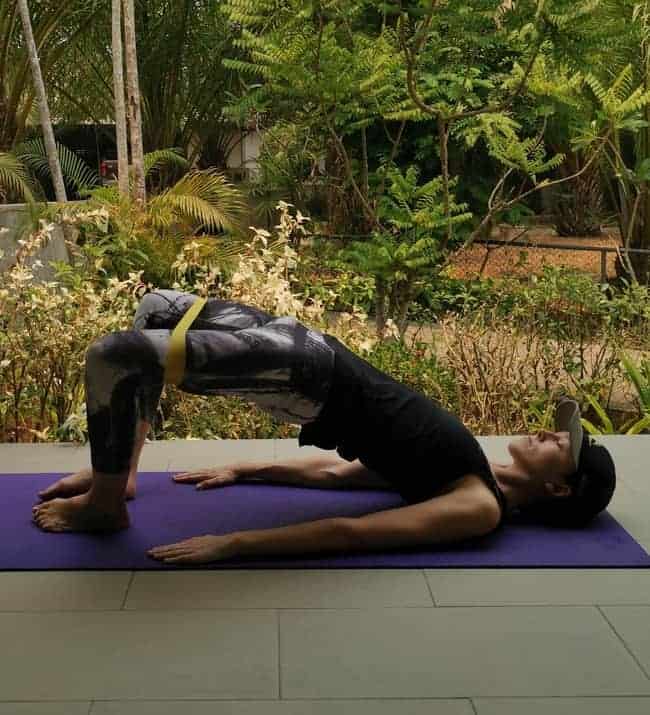
Bring knees out
We hope you feel the burn as much as we do! Keep going through this program 2-3 times per week and you will feel the difference in the saddle very soon.
If you enjoy resistance band training, then make sure to check out our other programs for core and upper body as well!
This article is accurate and true to the best of the author’s knowledge. It is not meant to substitute diagnosis, prognosis, treatment or any type of professional medical advice. Use common sense when exercising and consult your physician before starting any new training program.


